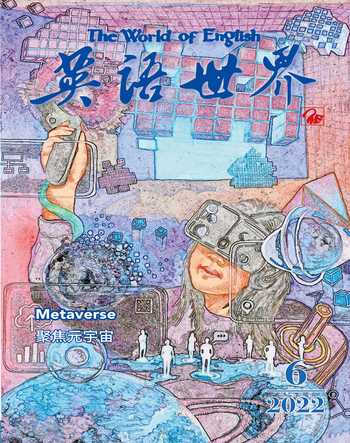What Made the Volcanic Eruption in the Pacific So Destructive?南太平洋火山喷发为何破坏力大?
张灿
Most of the world’s volcanism takes place underwater. This is not just because most of the world’s surface is underwater. It is because plate tectonics1 has placed the seams where the Earth’s crust is created and destroyed: in the ocean’s depths. The volcanic activity associated with creation is slow and steady, and it takes place a long way beneath the waves, all of which makes it very benign. That which accompanies the destruction is a lot more troublesome.
Witness the eruption of the Hunga Tonga-Hunga Ha’apai volcano in the Kingdom of Tonga at 04:15 GMT on January 15th, which created a huge cloud of ash and a potentially devastating tsunami.
The eruption was driven by subduction which sees one plate sink beneath the edge of another. Subduction zones2 are responsible for most of the world’s most violent eruptions, most famously in the “Ring of Fire3”—actually more like a horseshoe—around the Pacific. The Tonga Trench sits at its south-western tip. The volcanoes associated with the trench do not tower into the sky like those of Chile, Indonesia or Japan. But they can still pack a punch4.
Hunga Tonga-Hunga Ha’apai, which has a base about 20km across and rises some 1,800 metres above the seafloor, takes its name from the two parts of the rim of its crater, or caldera, that rise above the sea: the small uninhabited islands of Hunga Tonga and Hunga Ha’apai. An eruption that started in December 2014 filled in the gap between them with lava and ash, making the two islands one. A series of eruptions which began late last year saw the now unified island grow further.
In the eruption of January 15th a far larger amount of molten rock escaped from the magma chamber5 below the caldera. The sudden depressurisation of the gases dissolved within the lava, along with the vaporisation of vast amounts of seawater, made the eruption spectacularly explosive. A cloud of ash reached more than 20km into the sky; a global system of sensors operated by Vaisala6, a Finnish company, revealed the column of ash spewing forth to be roiling with lightning—some 100 bolts a second at the peak. The explosion was audible many thousands of kilometres away, its shock wave measured all around the world. Satellites showed the dust it threw up spreading out into a disc more than 250km across once it reached the stratosphere; it looked as if the planet had developed a pimple half as big as England.
Closely linked to this explosion above the surface seems to have been an implosion below. When an eruption empties out a magma chamber the rock above it is undermined. This is the process which creates calderas. The eruption on January 15th seems to have seen at least a partial collapse; satellite data show that only a small part of one of the old islands remains above the waves. The collapse probably played a role in the tsunami that followed. Most tsunamis are triggered by earthquakes; only about 5% are associated with volcanoes. But the shock wave which comes from a caldera collapse is an effective way of starting one.
How much damage the eruption did is as yet unclear. On January 17th Australia and New Zealand sent surveillance flights to assess the damage. Communications with Tonga have been sparse. Satellite pictures show tsunami damage to various structures near the coast of Tongatapu7, the main island in the kingdom, which is 65km south of the volcano. Heavy falls of volcanic dust—centimetres or even tens of centimetres—will have come down on the island, too, imperilling fresh-water supplies and other vital infrastructure.
Effects beyond Tonga, though, are likely to be minimal. Some large volcanic eruptions affect the climate by injecting large amounts of sulphur dioxide into the stratosphere, where it produces a long-lasting smog of tiny particles which reflect sunlight and thus change weather patterns around the world. The amount of sulphur that came out of Hunga Tonga-Hunga Ha’apai seems much too low to have any large-scale cooling effect, though its influence on the temperature and dynamics of the southern hemisphere’s stratosphere may be large enough to be of interest to scientists.
Geologists have found evidence of similar spasms at Hunga Tonga-Hunga Ha’apai, one about 1,000 years ago, one about 2,000 years ago. In both of those cases there seem to have been multiple eruptions. That does not necessarily mean the same will happen this time. The people living close to the volcano will hope that there is no more damage to come.
世界上大部分火山活动都发生在海底。这不仅因为地球表面大部分被海洋覆盖,还因为板块运动使地壳形成和破裂的接缝位于海洋深处。与地壳形成有关的火山活动缓慢稳定,且发生在海底深处,这些都使其不至于造成太大的破坏。但火山活动与毁坏结伴而来时,情况则麻烦得多。
2022年1月15日格林尼治标准时间04:15,汤加王国的洪阿哈阿帕伊岛火山喷发,形成巨大的火山灰云,还引发了可能造成很大破坏的海啸。
此次喷发是由板块俯冲引起,即一个板块挤到另一板块边缘下方。世界上绝大多数最猛烈的火山喷发都与俯冲带有关,最著名的要数环太平洋“火圈”了,其形状实际上更像一块马蹄铁。汤加海沟就位于“火圈”的西南端,这里的火山不像智利、印度尼西亚和日本的火山那样高耸入云,但喷发的破坏力仍不可小觑。
洪阿汤加-洪阿哈阿帕伊岛火山底径跨度约20千米,高出海床约1800米,因其火山口边缘突出海面的两部分而得名:无人居住的洪阿汤加岛和洪阿哈阿帕伊岛。2014年12月一次喷发后,熔岩和火山灰填补了两岛间的空隙,使其合二为一。2021年年底的几次喷发使得合为一体的岛屿进一步扩大。
在1月15日的喷发中,远超以往的大量熔岩从火山口下方的岩浆房喷涌而出。溶解在岩浆中的气体突然失压,海水大量蒸发,都让此次喷发又大又猛,蔚为壮观。火山灰云冲向20多千米的高空;芬兰维萨拉公司运营的全球传感器系统显示,喷出的火山灰柱翻腾中夹着闪电——最高时每秒产生约100次闪电。爆炸声在数千公里外都能听到,产生的冲击波在世界各地都可以监测到。卫星数据显示,喷发出的火山灰一到达平流层就扩散成直径超250千米的一大片,看起来就像是地球长出了一个有英格兰一半大的丘疹。
与海平面上方的爆炸密切相关的似乎是海面下的内爆。当火山喷发排空岩浆房时,位于其上方的岩石就遭到破坏,这是形成火山口的过程。1月15日的喷发似乎至少导致了火山口的部分坍塌;卫星数据显示,仅原有一座岛屿的一小部分仍位于海平面以上。坍塌可能引发了随后的海啸。绝大多数海啸是由地震引发的,只有5%左右与火山喷发有关,但是火山口坍塌产生的冲击波也是引发海啸的一大原因。
尚不清楚此次火山喷发到底造成了多少破坏。1月17日,澳大利亚和新西兰派出侦察机以评估损失。外界与汤加的联系很少。卫星图片显示,海啸损毁了汤加塔布岛沿岸的各种建筑——该岛是汤加王国的主要岛屿,位于洪阿汤加-洪阿哈阿帕伊岛火山以南65公里处。厚达几厘米甚至几十厘米的大量火山灰将落在岛上,危及淡水供应和其他重要的基础设施。
不过,此次喷发对汤加以外地区的影响可能很小。一些大型的火山喷发向平流层注入大量的二氧化硫,从而影响气候。在平流层中,二氧化硫会形成由微小颗粒构成、长期不散的雾霾,这些颗粒会反射阳光,从而影响全球的气候模式。洪阿汤加-洪阿哈阿帕伊岛火山喷发出的含硫气体似乎不多,不足以产生任何大规模的降温效果,但它对南半球平流层的温度和大气动力的影响可能足以引起科学家们的关注。
地质学家在洪阿汤加-洪阿哈阿帕伊岛火山地区发现了相似喷发的证据,一次约在1000年前,一次约在2000年前,似乎每次都发生了多次喷发,但这并不一定意味着此次喷发也会发生同样的情况。住在火山附近的人们希望不会再發生破坏。
(译者单位:郑州大学外国语与国际关系学院)
1 plate tectonics板块运动。 2 subduction zones俯冲带,通常指大洋板块俯冲于大陆板块之下的构造带。
3 Ring of Fire火圈,又称环太平洋火山带,太平洋经常发生地震和火山喷发的区域,呈马蹄形。 4 pack a punch产生巨大影响。 5 the magma chamber岩浆房,是地壳中储集岩浆的场所。 6 维萨拉公司,在全球范围内研发、生产、销售环境和工业测量产品。
7 汤加塔布岛,位于汤加的最南端,是汤加最大的岛屿,占全国土地面积的三分之一。
- 英语世界的其它文章
- The 7 Biggest Threats to Metaverse元宇宙面临的七大威胁
- What Is the Metaverse?什么是元宇宙?
- 6 Ways the Metaverse Will Change the World in the Near Future元宇宙将在六个方面改变世界
- Metaverse: Its Potential Negatives元宇宙的潜在弊端
- As China Warms Up to the Metaverse, Who’s Building It?中国元宇宙升温,谁是弄潮儿?
- Top 9 Popular Metaverse Books元宇宙九大热门书

